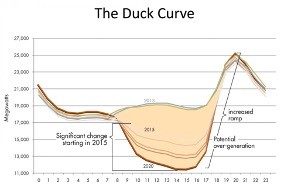November 17, 2022
The Energy Transition is all around us and represents a seismic shift in how our societies are powered. The much-delayed dash for renewables is picking up pace and the challenges of reconfiguring our energy networks is an immense challenge.
While new and exciting tech is being developed and deployed there is also great value to be unlocked by using the infrastructure we already have in more efficient ways. In particular, the electricity network itself. These networks are the largest and most complex machines ever built and represent huge stored value.
Annual network spending is based on forecasted population and economic growth. Although just why the asset base of the network increased from around $40B to over $90B (2006-2017), or an increase of 125% while maximum demand only increased 11%, is a story for another time.
Basically, the network is built to provide a certain standard of reliability at maximum demand. That maximum demand is set by households, despite they only account for around a quarter of all energy use. Aggregate demand generally is set by people in the morning, and particularly in the evening returning home and cooking, entertaining, cranking aircon etc.
From an engineering perspective the most efficient thing to deliver is a straight line, or steady amount of easily forecast energy use. So, any deviation from a straight line represents network capacity that isn't being used otherwise known as the utilisation rate. With that in mind let’s introduce the Duck Curve.

The duck curve shows low energy prices during the day (rooftop solar generation) and high prices at night (sun goes down and people use most energy)
The graph represents aggregate demand overs several years. First thing to note is the peak in the evening, or the head of the duck, which hasn’t changed much since 2013. The most notable change is the belly of the duck which has dropped significantly. What happened to the duck? This is due to the rapid uptake of household solar. Household solar is great the for the economics and carbon emissions of the households who have it, however an unintended (or poorly planned for is another way of putting it) consequence is that the network utilisation rates are getting worse as the peak and the low get further apart. That means investment is being wasted and network costs keep increasing. It’s not a great position to be in now that large sections of network have to be built to enable large scale solar that is finally at long last happening.
Anyway, the broader point is how can we make better use of the infrastructure we already have considering it cost so much in the first place. That’s where Demand Management comes in. Anything that can be done to flatten the peak demand line over time represents better utilisation and network savings. As households largely set peak demand it is logical that they are the ones that should be engaged and assisted to move whatever discretionary energy use they can out of those times, and share in the value unlocked.
There are huge potential savings on offer from more efficient network use. ARENA recently put out a study ‘Valuing Load Flexibility in the NEM’ that found that moving to high load flexibility through widespread renewables and storage could unlock $2B a year in potential savings.
Traditionally electricity retailers haveoperated on a ‘set and forget’ mode with customers; and customers for theirpart haven't been given a reason to engage with energy use apart from beingwhacked with large price increases. Network costs represent around half of yourenergy bill and so there are huge savings to be made, and if households are theones taking the action then it’s only fair that they are rewarded for it.



